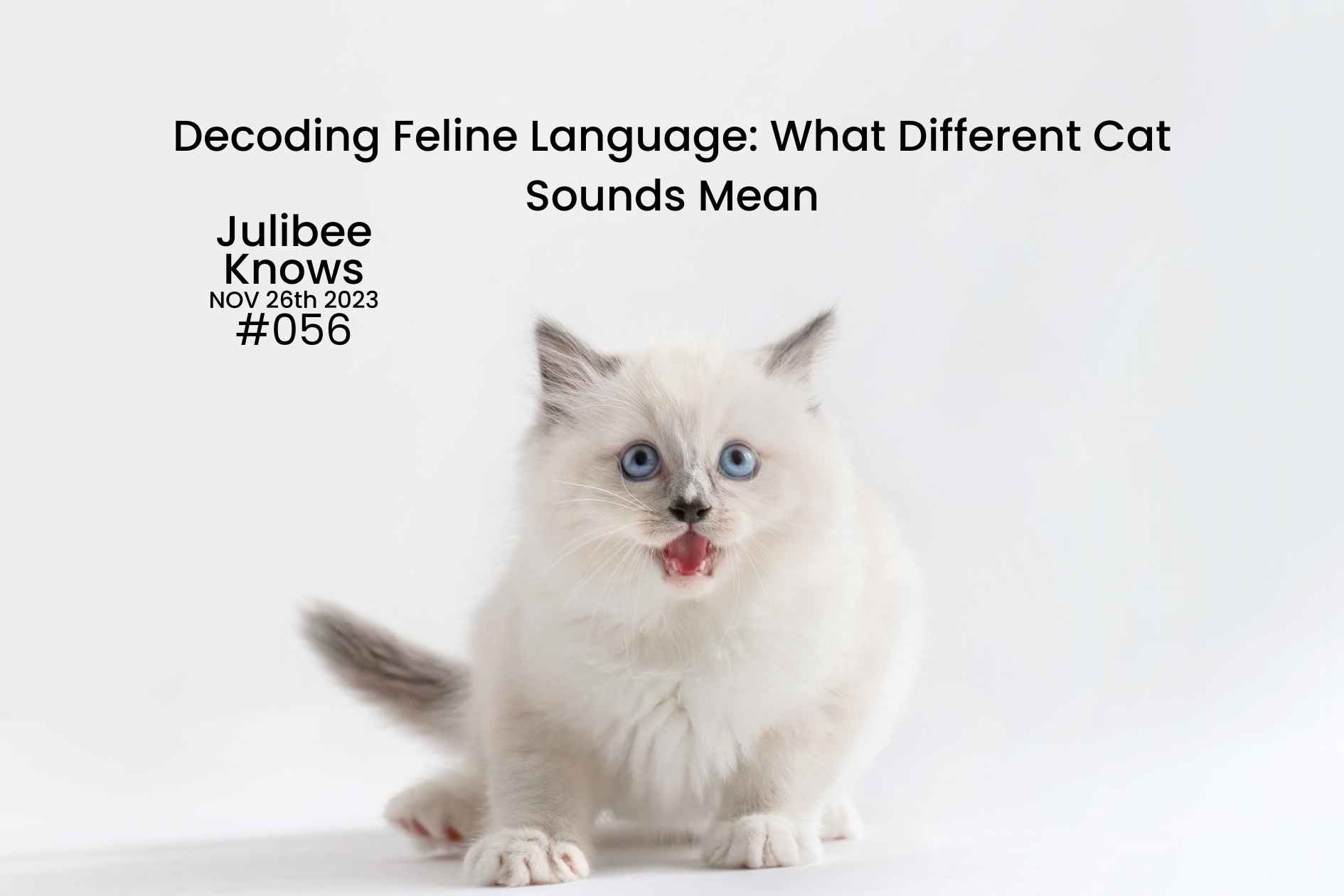
Decoding Feline Language: What Different Cat Sounds Mean
Explore the world of cat communication by deciphering various feline sounds. From the familiar 'meow' to the intriguing 'chirrups' and 'hisses,' understand what your cat is expressing. Learn the meanings behind different cat vocalizations and...
Inside this Article:
If you've ever owned a cat or are currently a cat parent, you might have noticed that beyond their adorable demeanor, cats seem to engage in a constant "conversation" with their owners. However, this communication isn't limited to a single "meow." Different situations elicit various sounds. What exactly is your cat trying to convey? This article will take you on a journey to find out.

Cats indeed have a diverse range of vocalizations, including meows, hisses, yowls, low growls, trills, and incessant chattering. Each sound carries a different meaning, and we'll explore them below:
I. Meowing Sounds
-
Meows:
-
Requesting Something: Kittens often emit long, thin, and high-pitched meows to attract their mother's attention. Adult cats consider humans as surrogate mothers and may meow to request food, protection, or affection.
-
Greetings: Short and high-pitched meows can signify a cat greeting you. If your cat consistently uses this sound during interactions, it indicates happiness and affection.
-
Displeasure: A long, low meow, sometimes accompanied by a high-pitched wail, suggests dissatisfaction. This could be due to neglect or the removal of something the cat values. In some cases, it might even be a vocal scolding.
-
II. Chirping Sounds
-
Chirrups:
-
Anxiety or Discomfort: When a cat is worried or uncomfortable, it may produce chirping sounds.
-
Territorial Warning: Strongly territorial, cats may chirp to express displeasure when their territory is encroached upon. This is common in multi-pet households.
-
Mating Behavior: Unspayed or unneutered cats might emit prolonged and loud chirrups as a sign of mating desire.
-
Boredom: Some indoor cats, especially at night, may chirp when feeling bored. Providing daytime stimulation can help alleviate this.
-
Cognitive Issues: Persistent chirping, especially in older cats, may indicate cognitive dysfunction or other cognitive issues. Consult a vet if this behavior persists.
-
III. Hissing Sounds
-
Hissing:
-
Fear: Cats hiss when they feel threatened or frightened. It's a warning to stay away. If ignored, the cat may escalate to more aggressive behaviors.
-
Anger: Perceived intrusion or violation of their possessions may lead to hissing. Cats are possessive animals, and hissing is a clear signal of displeasure.
-
IV. Low Growling Roars
-
Low Growls:
-
Fear or Pain: Similar to hissing, low growls can indicate fear or pain. If your cat frequently growls without apparent cause, a vet visit is recommended.
-
Anger and Defensiveness: Cats may growl when they feel their territory or belongings are under threat.
-
V. Purring Sounds
-
Purring:
-
Closeness: Kittens start purring shortly after birth, fostering a connection with their mother. This is a sign of contentment and trust.
-
Happiness and Satisfaction: Adult cats purr when they feel happy and satisfied. It could be in response to petting, favorite treats, or simply lying on your lap.
-
Self-Soothing: Cats may purr to self-soothe, aiding in the healing of psychological or physical traumas.
-
Fatigue: If your cat suddenly starts purring after play, it indicates tiredness. Cats also need rest after periods of entertainment.
-
VI. Trilling with a Gurgling Sound
-
Trilling:
-
Expressing Joy: Trilling is often associated with excitement and happiness. It's a positive sound, suggesting your cat is pleased.
-
Mother-Kitten Communication: Mother cats use trilling to communicate with their kittens. When your cat trills, it might be expressing affection or bonding.
-
Understanding these varied sounds helps strengthen the bond between you and your cat. By interpreting their vocalizations, you can better meet their needs and ensure a happy, communicative relationship.



238 comments
yDxWeqMljPKkNmf
HCUJeShtOb
UyOLIbTQvPBhr
jByukzOgNrFpV